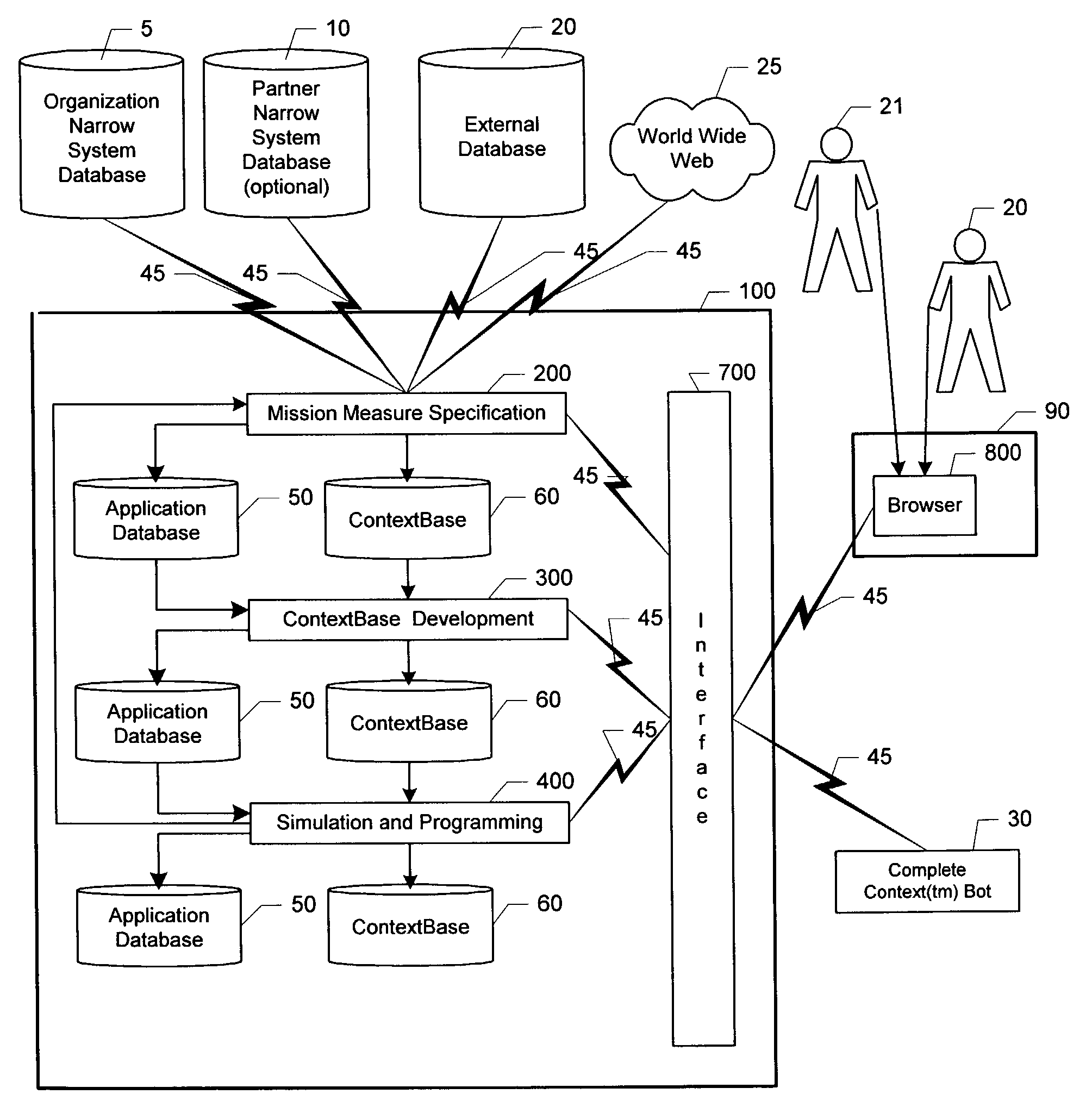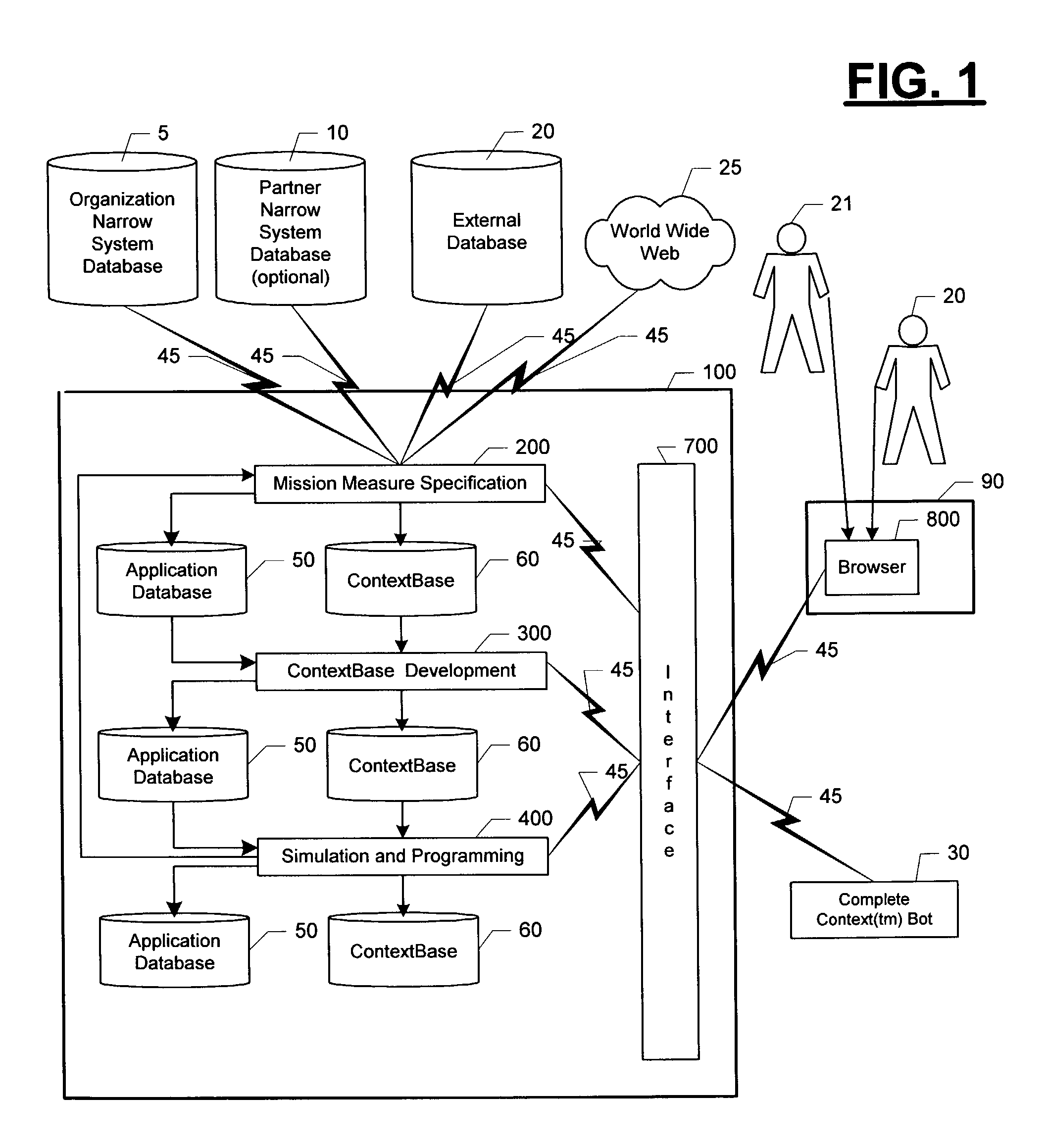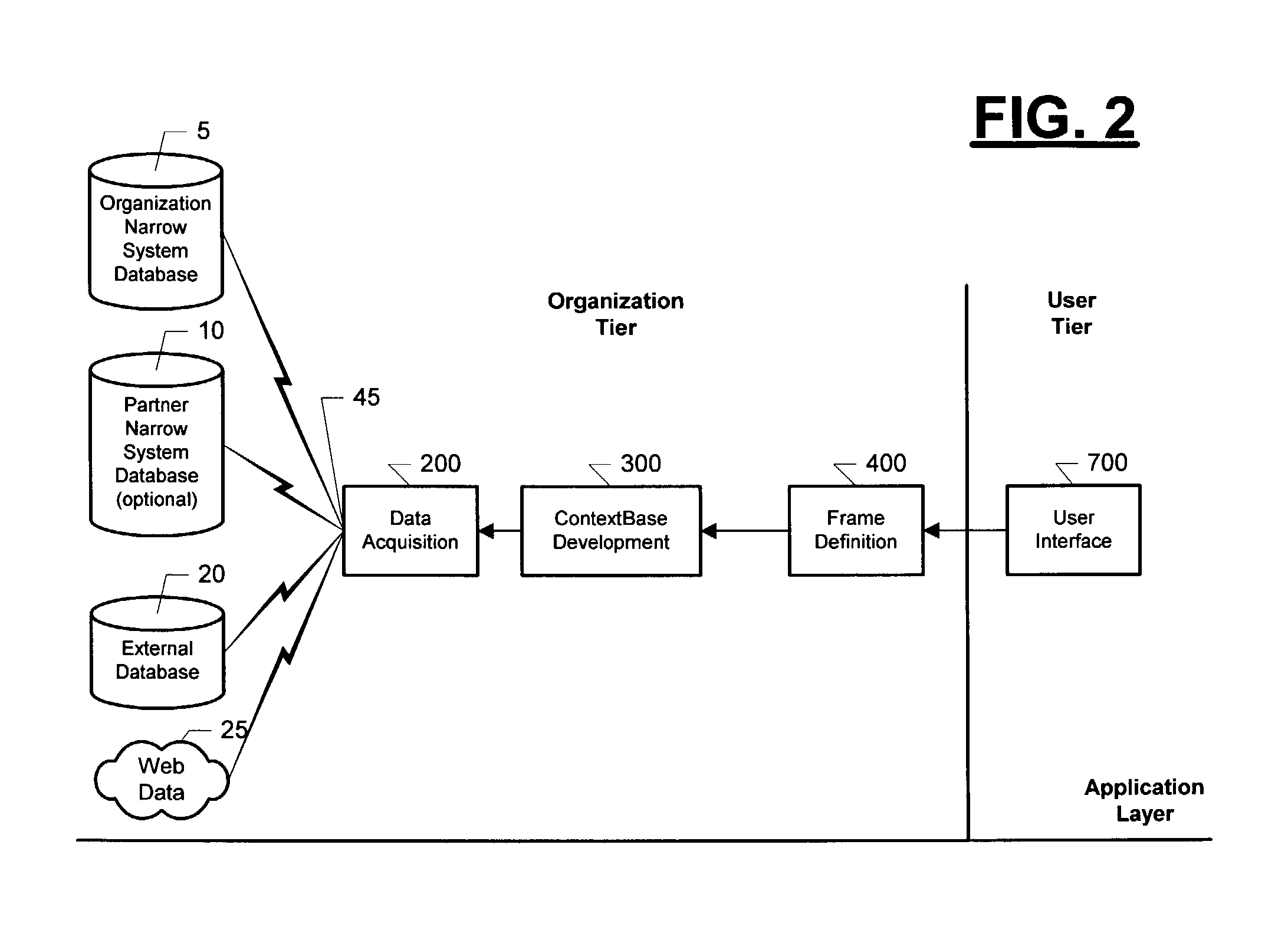Automated bot development system
a bot development system and automatic technology, applied in the field of automatic bot development system, can solve the problems of many implementations, relatively little attention, failure of agents or bots to become fully established as useful products for both consumers and businesses, etc., to enhance the ability of the system to program bots, improve bot performance, and improve mission performance
- Summary
- Abstract
- Description
- Claims
- Application Information
AI Technical Summary
Benefits of technology
Problems solved by technology
Method used
Image
Examples
Embodiment Construction
[0080]FIG. 1 provides an overview of the processing completed by the innovative system for automated bot development. In accordance with the present invention, an automated system (100) and method for developing a mission-oriented ContextBase (60) that contains the six context layers for each mission measure by organization and organization level is provided. Processing starts in this system (100) when the data extraction portion of the application software (200) extracts data from an organization narrow system database (5); optionally, a partner narrow system database (10); an external database (20); and a world wide web (25) via a network (45). The processing completed by the system (100) may be influenced by a user (20) or a manager (21) through interaction with a user-interface portion of the application software (700) that mediates the display, transmission and receipt of all information to and from a browser software (800) such as the Netscape Navigator® or the Microsoft Inter...
PUM
 Login to View More
Login to View More Abstract
Description
Claims
Application Information
 Login to View More
Login to View More - R&D
- Intellectual Property
- Life Sciences
- Materials
- Tech Scout
- Unparalleled Data Quality
- Higher Quality Content
- 60% Fewer Hallucinations
Browse by: Latest US Patents, China's latest patents, Technical Efficacy Thesaurus, Application Domain, Technology Topic, Popular Technical Reports.
© 2025 PatSnap. All rights reserved.Legal|Privacy policy|Modern Slavery Act Transparency Statement|Sitemap|About US| Contact US: help@patsnap.com



